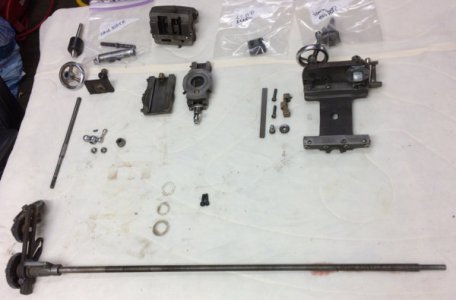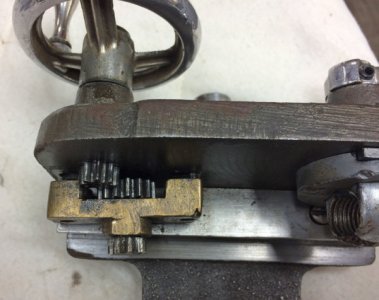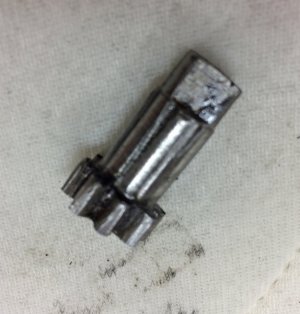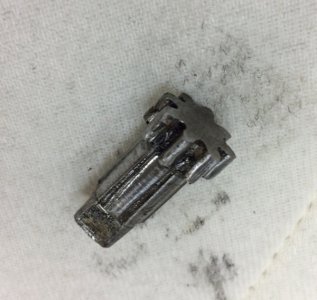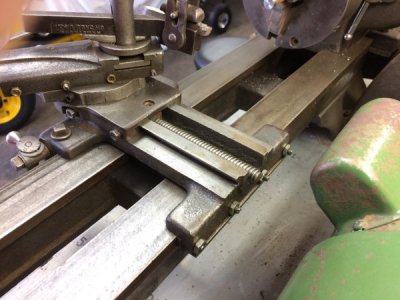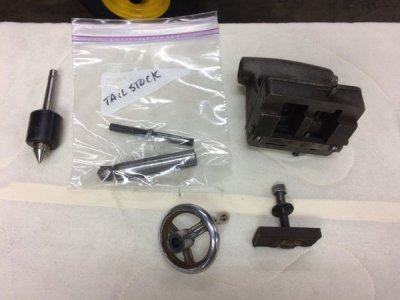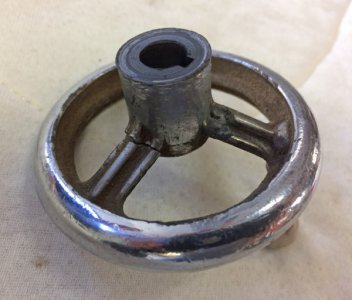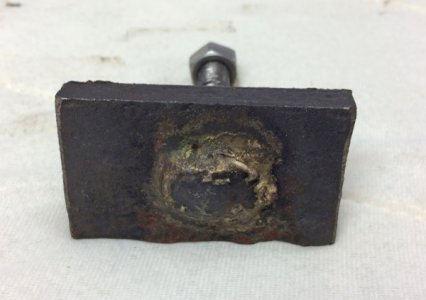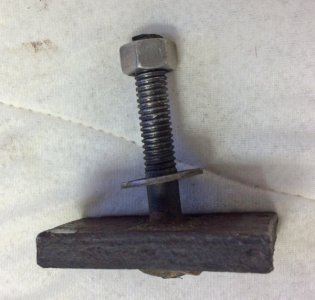As Frank said, the reason that the cross feed screw moves around is that the attachment screw for the nut is missing. He's probably correct about the countershaft assembly as well.
Current practice is to call the center shown in your tailstock a live center. Two generations ago, a live center was one in the head stock and the one in the tails stock was either a dead center or a rotating dead center. So when you see "live center" or "dead center" in print, you need to consider vintage and context before deciding what the author meant.
Regardless of the sloppy wiring, a 3/4 HP motor is 2X over-kill on a 6" machine. Atlas recommended 1/4 to 3/8 HP. An oversize motor only does two things. If something does go wrong, you're going to break more of the machine than you would have with the proper size motor. And it costs more to operate.
On the way that the motor is mounted, there are four possible ways, and I've seen photos showing all four. There are two ways in which to assemble the counter shaft assembly. The way that yours is is uncommon. The standard way has the large driven pulley (which BTW should be a two step, not a single step, on both the countershaft spindle and on the motor) on the left end of the countershaft spindle. In various Atlas publications I've seen the motor mounted either under the countershaft or to the left of the countershaft, in both cases with the large pulley on the left side. However, that really doesn't matter. But putting the motor where yours is is the worst of the four choices. Although most chips will be thrown toward the operator, the second most likely is toward your motor. The same goes for coolant if you use any. The motor is safer up under the countershaft. Which is where most of the Atlas photos show it. I imagine that whoever put the oversize motor on it discovered that the motor is too large to fit under the countershaft. So instead of using the proper size motor,he turned everything around. As far as which direction the lathe runs, AC motors will run in either direction, depending upon how they are wired. If it runs backwards the first time you turn it on, you just change the wiring.
The back gears look like they have not been greased in decades. Probably the rest of the machine is the same way.
The six chuck jaws look like the standard set for a small 3-jaw self-centering chuck. Unlike on a 4-jaw, you cannot turn the jaws around on most 3-jaw.chucks. So they all come originally with two sets of jaws. Usually, when you buy a small 3-jaw chuck, they only come with whichever set is in the chuck. Because the PO has lost the other set. So you got lucky there.

